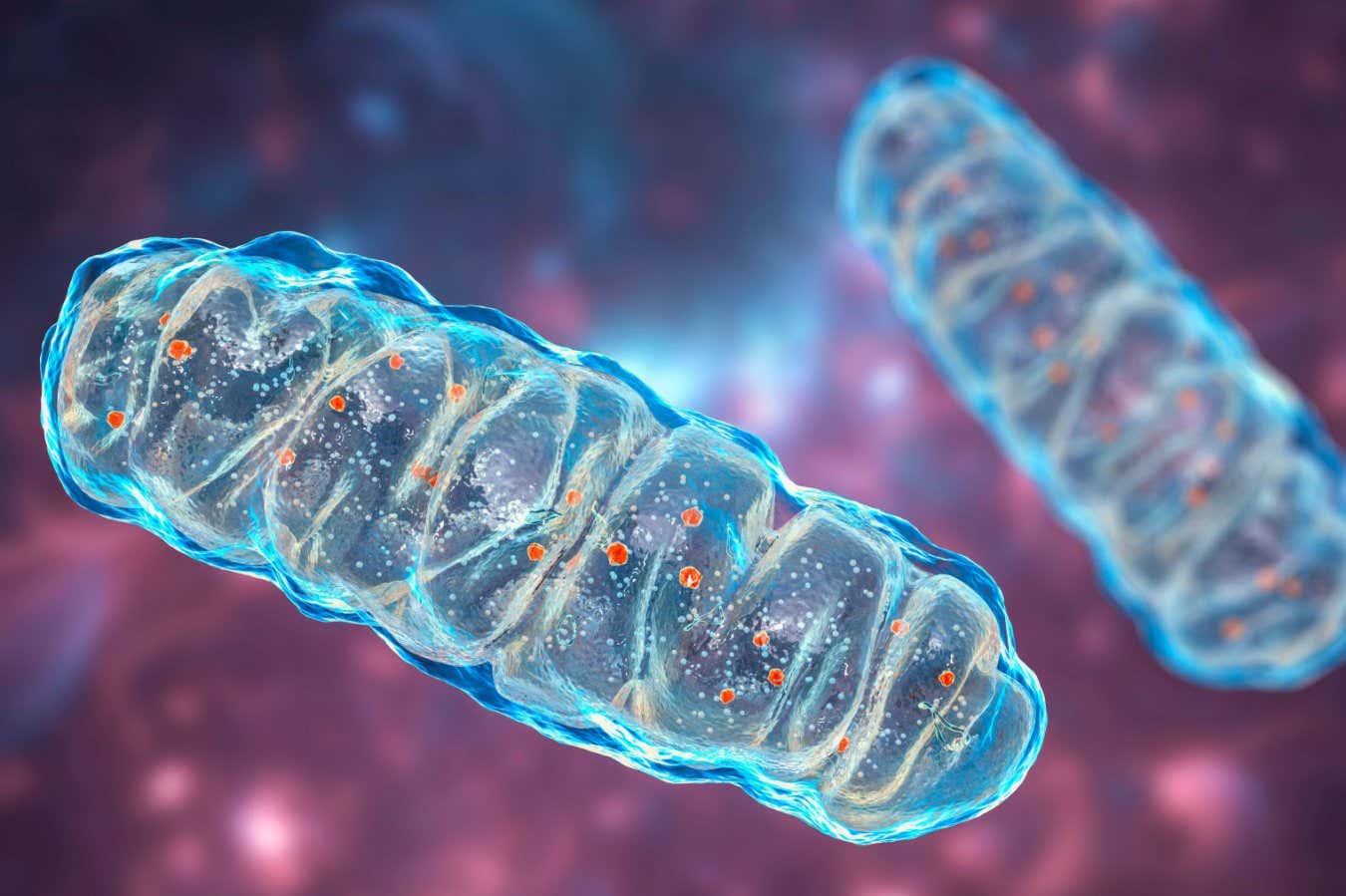
Highly reactive oxygen can form in mitochondria within our cells
KATERYNA KON/SPL/Alamy
After several decades, researchers are finally getting a grasp on when an odd and destructive type of oxygen arises in chemical reactions in living cells and certain batteries.
Not all oxygen molecules are created equal. In some, their two most energetic electrons have opposite values of quantum spin while in others their spins match. When they match, the molecule is known as “singlet oxygen”, which is highly reactive so it can cause toxic changes in proteins and fats within cells and eat away parts of some batteries. Since the 1960s, chemists have been working to determine when exactly this evil twin of the oxygen that we happily breathe arises in chemical reactions. Stefan Freunberger at the Institute of Science and Technology Austria and his colleagues have now figured it out.
They carried out a series of experiments that started with a molecule of superoxide – a compound that contains oxygen and participates in chemical reactions used by mitochondria to power cells – and ended with the production of oxygen in either form. While cells have enzymes that help this process, the team tried different “mediator” molecules. This allowed them to record oxygen-making reactions with a broad range of driving forces, or energy differences that force the reaction to happen in the first place. They discovered that it is exactly this driving force that matters – for singlet oxygen to form, this force had to get very high.
“There was really truly a fierce debate about whether or not it [singlet oxygen] forms in the environment of cells. Up to now it has never been clarified,” says Freunberger.
Because mitochondria have high pH values that keep the driving force low, the new work implies that singlet oxygen is not produced in high quantities within these cellular powerhouses, which protects the cell from damage.
Kristopher McNeill at ETH Zürich in Switzerland says that the question of singlet oxygen production has consequences beyond biology. “Wherever it’s generated it can damage or react with things that are in the neighbourhood,” he says. The analysis in the new study pertains to certain kinds of batteries and could be part of an explanation for why they sometimes corrode from the inside, says McNeill.
Topics:
Source link : https://www.newscientist.com/article/2498273-the-mystery-of-highly-reactive-oxygen-has-finally-been-solved/?utm_campaign=RSS%7CNSNS&utm_source=NSNS&utm_medium=RSS&utm_content=home
Author :
Publish date : 2025-10-01 16:00:00
Copyright for syndicated content belongs to the linked Source.